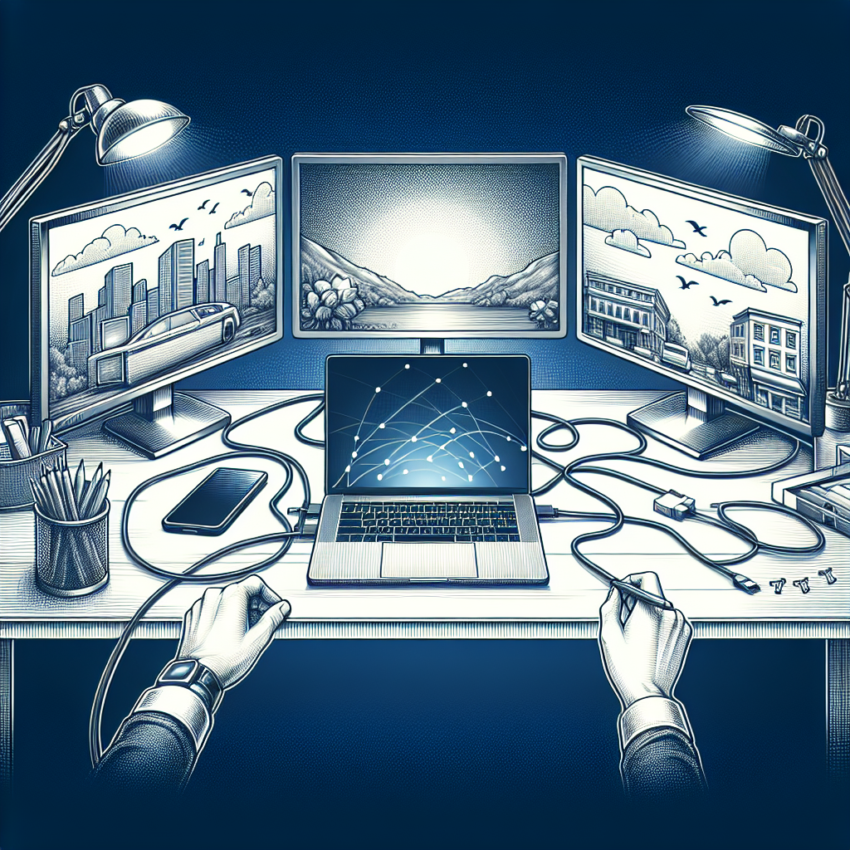Why Use Dual Monitors?
Using dual monitors can significantly enhance your productivity, creativity, and overall computing experience. This setup allows you to multitask more efficiently, providing you with more screen real estate to run multiple applications simultaneously. Whether you are a professional, gamer, or creative, dual monitors can help you stay organized and improve your workflow.
What You Need to Get Started
Before diving into the setup process, ensure you have all the necessary equipment and tools:
- Second Monitor: Ensure your second monitor is compatible with your laptop.
- Video Cable: Depending on the available ports, you might need an HDMI, DisplayPort, VGA, or USB-C cable.
- Adapter: If your laptop and monitor ports don't match, you may need an adapter.
- Monitor Stand: Optional, but a stand can help with ergonomics and space management.
Connecting Your Dual Monitors
1. Check Your Laptop's Ports
First, identify the output ports on your laptop. Common ports include HDMI, DisplayPort, VGA, and USB-C. Familiarizing yourself with these ports will help you choose the right cable and adapter.
2. Connect the Cables
Once you have identified the ports, connect one end of the cable to the monitor and the other end to the corresponding port on your laptop. If you are using an adapter, connect the adapter to the laptop first, then attach the cable to the adapter and monitor.
3. Power on the Monitor
Ensure that your second monitor is plugged into a power source and turn it on. Your laptop should automatically detect the external monitor. If it doesn't, proceed to the next step.
Configuring Your Display Settings
1. Access Display Settings on Windows
For Windows users, right-click on the desktop and select Display settings from the context menu. This will open the display settings window where you can manage your dual monitors.
2. Access Display Settings on macOS
For macOS users, click on the Apple menu and go to System Preferences. From there, select Displays to open the display settings window.
3. Arrange Your Monitors
In the display settings window, you'll see a visual representation of your monitors. Drag the monitors to arrange them as per your setup. You can place them side by side, one above the other, or in any configuration that suits your tasks.
4. Set Primary and Secondary Monitor
Choose which monitor will be your primary display. This is where your main desktop icons and taskbar (in Windows) or menu bar (in macOS) will appear. You can change this by selecting the desired monitor and checking the box labeled Make this my main display (Windows) or Mirror Displays (macOS).
5. Adjust Resolution and Orientation
Ensure each monitor's resolution and orientation are set correctly. Higher resolution offers better clarity but may require more processing power. Orientation settings will help if you're using a monitor in portrait mode.
Troubleshooting Common Issues
1. Monitor Not Detected
If your laptop does not detect the second monitor, try the following steps:
- Check all cable connections and ensure they are securely attached.
- Update your laptop's graphics drivers.
- Restart your laptop and monitor.
- Try using a different cable or port.
2. Display Flickering or Not Optimal
If the display is flickering or not displaying at the expected resolution, consider these options:
- Check for loose cable connections.
- Ensure the monitor is set to its native resolution.
- Update your graphics drivers.
3. Sound Issues
If you experience sound issues when connecting a second monitor with built-in speakers, check your laptop's sound settings to ensure the correct audio output device is selected.
Optimizing Your Dual Monitor Setup
To get the most out of your dual monitor setup:
- Use software tools like DisplayFusion or Ultramon for advanced monitor management.
- Keep both monitors calibrated with settings that reduce eye strain.
- Use extended desktops for easier multitasking instead of mirroring displays.
- Invest in ergonomic accessories like monitor arms and stands.
Setting up dual monitors on your laptop can greatly enhance your productivity and make your computing experience more enjoyable. With the right equipment and an easy step-by-step process, you'll be ready to take on multiple tasks and boost your efficiency.

